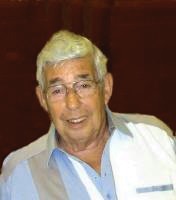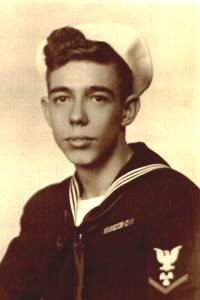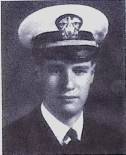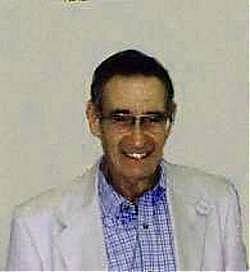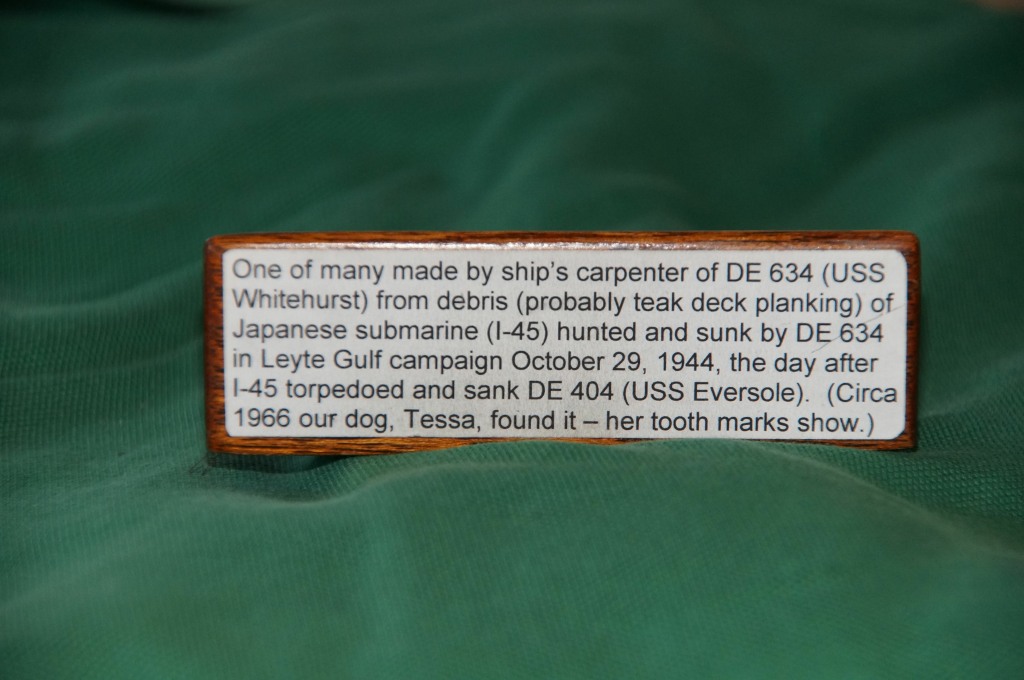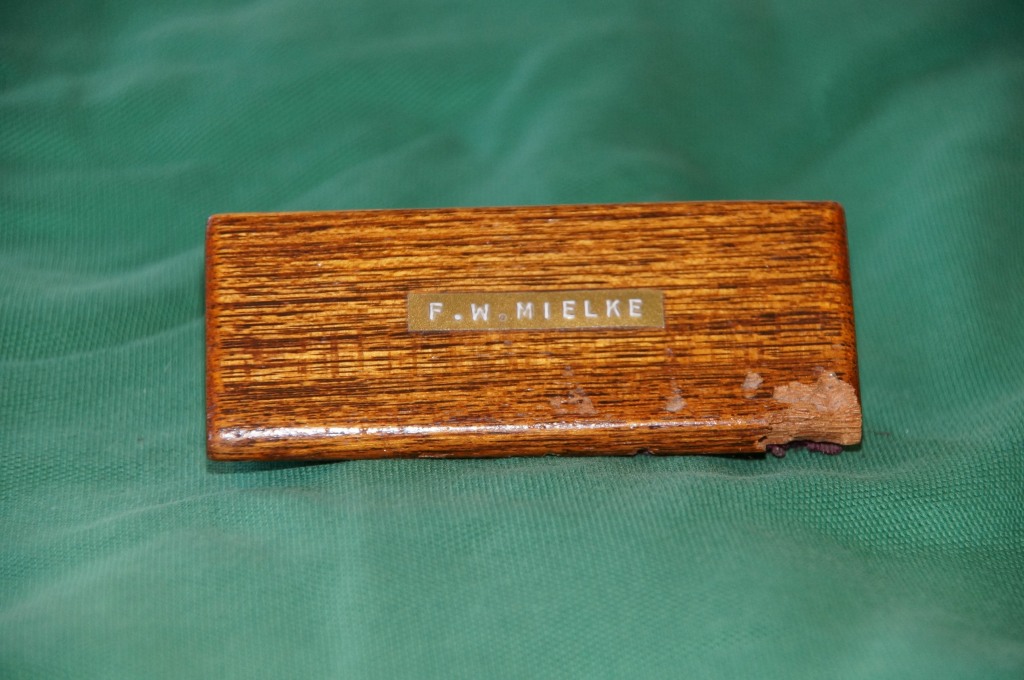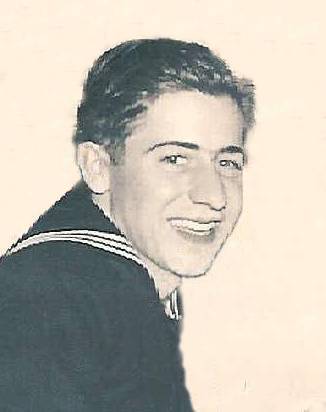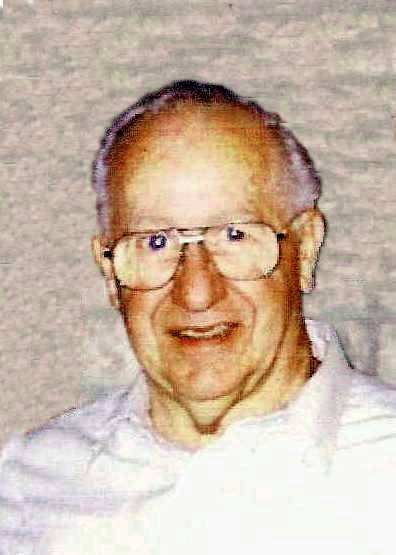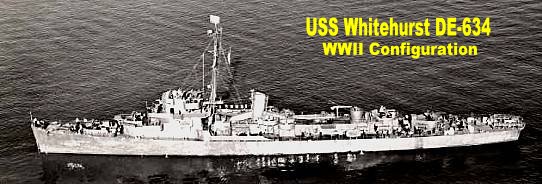
|
The Sinking of Japanese Submarine I-45 |
|
|
The following comments were made by Mr. Roy E. Graham, July 10, 1997. Mr. Graham was a crew member of the USS Whitehurst at the time of the sinking of the large Japanese submarine, I-45: |
|
|
|
|
|
Roy Graham 2004 |
Roy Graham WT 3/c |
|
We were escorting a convoy out of Leyte Gulf. That is, the Eversole, Bull, and
Whitehurst. I believe we had assumed the starboard flank position and as I
recall the Eversole might have been at the point position. At 3:30 general
quarters was sounded and we heard on the speaker that the Eversole had been
torpedoed. The Whitehurst and Bull made way to the Eversole and we transferred
medical supplies at the site of the Eversole sinking. We proceeded to chase the
submarine and used hedgehogs rather than depth charges as our method of attack.
The hedgehog method was one in which we would come up from behind the submarine
and shoot off 12 to 24 hedgehogs in a pattern from the bow of the ship. If a
hedgehog made contact with the submarine then all the hedgehogs would explode.
If no contact was made the hedgehogs would remain undetonated so as not to
disturb our ships sonar gear in searching out the submarine. After several runs
at the submarine we reported at 12:00 - 12:30 seeing wooden repair plugs bobbing
to the surface. This was the type of cone shaped wooden repair plug to insert in
a hole in the submarine to stop water leakage. We put a whale boat over the side
to see if we could recover any of the items from the submarine. We also saw
books and other papers floating to the surface but these quickly returned to
deep below the surface of the water and was out of reach. We also saw much oil
in the water too. I walked to the stern of the ship about this time and also saw
other debris floating in the water that I presume was from the submarine. I
would have to say it was doubtful that anyone survived from the submarine. The
hedgehogs must have exploded when making contact with the submarine that was
deeply submerged. No survivors from the submarine were ever found. |
|
|
The large I-45 sunk by
Whitehurst was a "Cruiser Submarine".
|
|
|
Excerpt from p.437, "United States Destroyer Operations in World War II" |
|
|
by Theodore Roscoe. U. S. Naval Institute, 1953 |
|
|
Contributed by Roger Ekman, Capt. U.S.N. Ret., who served on Whitehurst |
|
|
Shortly after Eversole went down, destroyer escort Whitehurst received over the TBS word from destroyer escort Bull, that their sister DE had been torpedoed and sunk. Whitehurst was operating at the time with Task Unit 77.7.1, which had the mission of feeding fuel and ammunition supplies to units of the Seventh Fleet supporting the Leyte landings. After relaying the word on Eversole, destroyer escort Bull requested a DE to act as A/S screen while she rescued survivors. Whitehurst was thereupon dispatched to the scene of the sinking. Her skipper, Lt J. C. Horton, U.S.N.R. took the ship through a search pattern around the area. The search had almost completed when the Whitehurst picked up a sonar contact at 0545. Ten minutes later she reached firing position and let fly with a full hedgehog salvo. Results were negative. At 0608, 0634, and 0648, she delivered hedgehog attacks. Eleven seconds after the fourth salvo splashed into the sea, a series of explosions echoed up from below. The rataplan ended in a thunderous detonation which ebbed away with a prolonged rumble. The undersea blasting was violent enough to knock out Whitehurst's pinging gear. Thereupon Bull was asked to continue the search. After fruitless efforts to gain contact, Bull's skipper reported over TBS, "From the sound of the explosions where I was, three miles away, I don't think there is anything left of the sub. His implication was correct. However, the destroyer-men, making a daylight search of the area, discovered some submarine residue. splintered teak, a wooden damage control plug, chunks of painted wood and what not. After the war these items were attributed to the submarine I-45, the sub which probably sank Eversole. Whitehurst had lost no time in tracking down and exterminating the
Japanese killer.
|
|
|
Many thanks SSgt USAF Jack McLaughlin, family & friend of the USS England for the following link which traces the movements of the Japanese Submarine I-45 |
|
|
Movements if Submarine I-45
Photo of backside with story attached by Fred
Mielke. The long
dimension is 3.75"
Photo of Front |
|
|
|
|
|
The
following, paraphrased, information was supplied by:
The Ship's Carpenter worked with a mate named
Connelly to make the Note: Neal
Mielke got in touch, after his father died, to offer the pictures of
the souvenirs and Our thanks to Neal and Lew for this follow up to the "Sub Sunk" story. mc |
|
